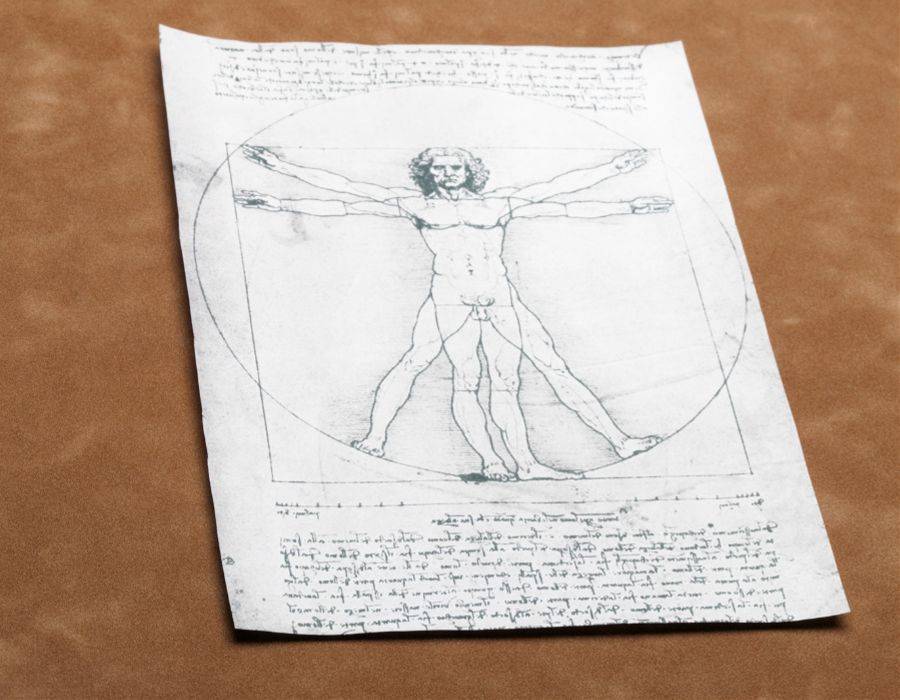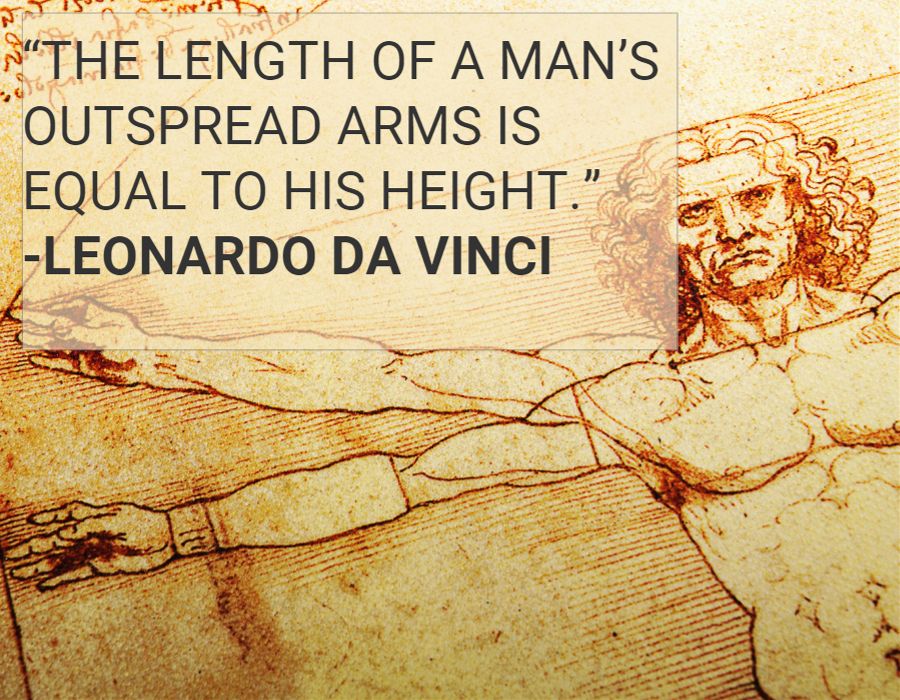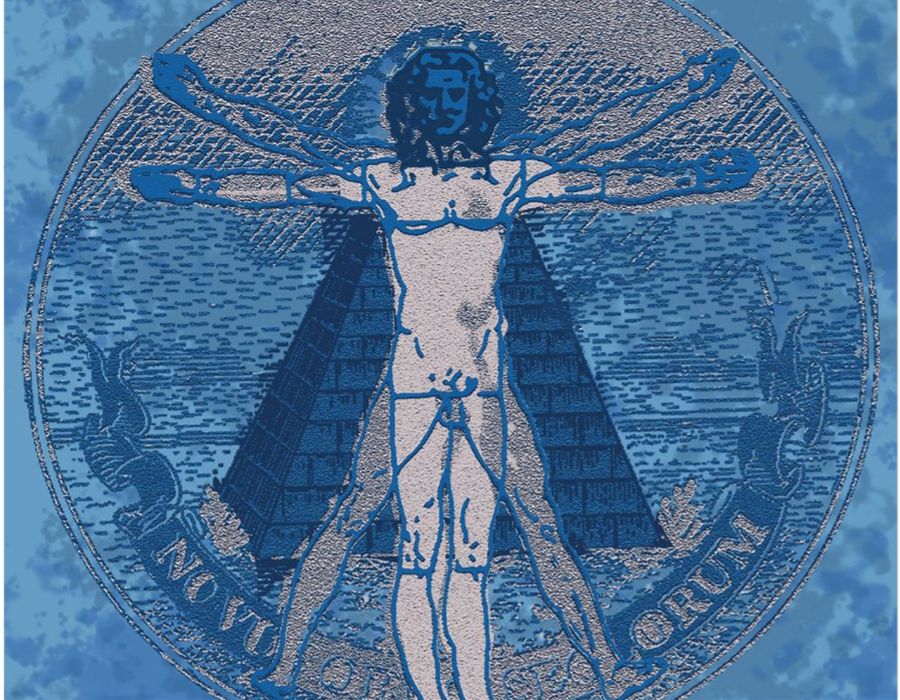In the silent matrix of existence lies a blueprint so profound it has captivated the minds of artists, scientists, and spiritual seekers for centuries. Leonardo da Vinci’s Sacred Geometry Vitruvian Man stands as a testament to the divine architecture woven into our very being. This isn’t merely a drawing—it’s a cosmic doorway, inviting us to recognize ourselves as living embodiments of universal patterns.
Through this masterful sacred geometry vitruvian man analysis, we discover that the proportions of our bodies mirror the mathematical rhythms that pulse through galaxies, flowers, and crystalline structures alike.
Table of Contents
- 1 Key Takeaways
- 2 The Birth of a Timeless Symbol
- 3 Sacred Geometry: The Universal Language
- 4 The Body as Cosmic Temple: The Four Elements
- 5 Cross-Cultural Interpretations of the Divine Human Form
- 6 Common Misconceptions and Deeper Truths
- 7 Practical Applications: Embodying Sacred Proportion
- 8 The Vitruvian Man in Contemporary Spirituality
- 9 Conclusion: The Eternal Relevance of Sacred Proportions
- 10 FAQ
- 11 Sources
Key Takeaways
- Divine Proportions – The Vitruvian Man illustrates how human form reflects cosmic mathematical order through golden ratio relationships.
- Spiritual Bridging – By connecting circle (heaven) and square (earth), the drawing represents humanity’s unique position as mediator between spiritual and material realms.
- Cultural Universality – Sacred geometric patterns appear across diverse spiritual traditions, from Hindu mandalas to Christian iconography.
- Embodied Practice – Working with Vitruvian proportions offers practical ways to align body, mind, and spirit through meditation and creative expression.
- Living Harmony – Recognizing these patterns in daily life can transform our relationship with ourselves and the universe around us.
The Birth of a Timeless Symbol
In the fertile creative soil of Renaissance Italy, as classical knowledge was being rediscovered and celebrated, a revolutionary marriage of art and science was taking shape. It was in this intellectual renaissance that Leonardo da Vinci created what would become perhaps the most recognizable image of human proportion ever conceived.
Da Vinci wasn’t simply an artist or scientist—he embodied a unique integration of these disciplines that the modern world has largely forgotten. His mind refused to separate beauty from function, spirit from matter. This holistic perspective made him the perfect vessel to bring forth the Vitruvian Man, a drawing that would transcend its initial purpose as an anatomical study.

The drawing took its inspiration from the ancient Roman architect Vitruvius, who had proposed ideal human proportions as the foundation for architectural harmony. But in Leonardo’s hands, these architectural principles transformed into something far more profound—a visual theorem demonstrating humanity’s place in the cosmic order.
Working alongside mathematician Luca Pacioli, who was developing his treatise on the “Divine Proportion” (what we now call the golden ratio), da Vinci was immersed in exploring how mathematical relationships revealed spiritual truths. Their collaboration sparked insights that infused the Vitruvian Man with layers of meaning beyond mere anatomical precision.
What emerged was not just a drawing but a spiritual iconography that would speak across centuries—a visual meditation on what it means to be human in a mathematically ordered universe.
Sacred Geometry: The Universal Language
Sacred geometry isn’t just pretty patterns—it’s a visual language that speaks of the underlying order permeating all creation. Across vastly different cultures and time periods, humans have recognized certain geometric relationships as reflections of divine intelligence.
At its heart, sacred geometry suggests that the universe isn’t random but follows precise mathematical principles that reveal themselves in everything from spiral galaxies to the growth patterns of plants. These divine blueprints appear with such consistency that many traditions consider them evidence of conscious design in nature.
In the Vitruvian Man, two primary shapes dominate the composition: the circle and the square. The circle, with no beginning or end, symbolizes eternal perfection, heaven, and the spiritual realm. Its continuous curve represents unity, wholeness, and the divine.

The square, by contrast, with its four equal sides and right angles, represents the material world, stability, and earthly existence. Its four corners evoke the cardinal directions, the four elements, and the tangible limitations of physical reality.
What makes the Vitruvian Man so powerful is how it demonstrates that these seemingly opposite realms—heaven and earth, spiritual and material—find their perfect reconciliation in the human form. The human figure touches both the circle and the square, suggesting our unique position as mediators between worlds.
Running through this harmony of forms is the golden ratio (approximately 1:1.618), a proportion found throughout nature that consistently creates visually pleasing relationships. In the Vitruvian Man, this divine proportion appears in numerous relationships, such as the placement of the navel dividing the body according to this sacred ratio. This mathematical harmony creates an immediate sense of rightness that resonates with viewers on an instinctive level.
Through sacred geometry, the Vitruvian Man doesn’t just represent an idealized human—it reveals how we embody the same mathematical principles that govern the unfurling of ferns, the spiral of galaxies, and the orbital patterns of planets.
The Body as Cosmic Temple: The Four Elements
The Vitruvian Man doesn’t just illustrate proportions—it reveals the human body as a living sanctuary where the elemental forces of creation converge. In the classical understanding that informed da Vinci’s work, all matter consists of four fundamental elements: earth, water, air, and fire.
These elements find perfect expression in the stance of the figure. Notice how the firmly planted feet connect with the element of earth, representing stability, groundedness, and material existence. This is our foundation—the physical body that gives us presence in the world.
Moving upward, the flowing curves of the torso embody the element of water. Here we find adaptability, emotion, and intuition. The subtle contours of the abdominal muscles and ribcage reveal our capacity to flow with life’s changing currents.
The outstretched arms extend into the realm of air, symbolizing intellect, communication, and relationship. Through our embracing gesture, we reach out to connect with others and exchange ideas—just as air links all living beings through the shared breath.
Finally, the upward gaze of the figure represents fire—the aspiration toward higher consciousness and spiritual transformation. This element speaks to our uniquely human capacity for transcendent awareness and our drive to evolve beyond mere physical existence.
These elemental correspondences weren’t just poetic metaphors to Renaissance thinkers—they reflected the microcosm-macrocosm principle, often expressed as “As above, so below.” This ancient Hermetic wisdom recognized that the patterns of the cosmos are reflected within each human being.
The Vitruvian Man’s elemental balance connected directly to medieval medicine’s theory of bodily humors. Each element corresponded to a humor or temperament: melancholic (earth), phlegmatic (water), sanguine (air), and choleric (fire). A healthy individual maintained balance among these forces, just as the Vitruvian Man demonstrates perfect equilibrium in his posture.
By embodying all four elements in harmonious proportion, the Vitruvian Man offers a visual meditation on wholeness—reminding us that spiritual integration requires honoring all aspects of our nature, from our most earthly foundations to our highest aspirations.
Cross-Cultural Interpretations of the Divine Human Form
Christian Perspective
For Christians, the Vitruvian Man’s outstretched arms immediately evoke Christ on the cross. This cruciform stance isn’t coincidental—it reflects the deep Christian idea that human beings are created in the image of God (Imago Dei). The figure’s simultaneous connection to both circle and square mirrors Christ’s nature as both divine and human.
Saint Augustine viewed the human body as a sacred metaphor for divine mediation. The vertical axis running from head to feet represents our connection to God, while the horizontal spread of the arms symbolizes our earthly relationships with fellow creatures. At the intersection—the heart—divine and human love converge.
The navel’s position as the center point carries special significance in Christian symbolism. As the umbilical cord once connected us to our mothers, this center represents our spiritual umbilicus—the connection to divine source that sustains our spiritual lives. Some medieval theologians even referred to Jerusalem as the “navel of the world” (umbilicus mundi), the central point where heaven and earth meet.
Hindu and Buddhist Traditions
In Vedic traditions, the Vitruvian Man resonates powerfully with the concept of Purusha—the cosmic man whose body forms the template for all creation. According to these ancient texts, the universal being was sacrificed at the beginning of time, with different parts of his body becoming elements of the cosmos.
The chakra system in Hindu and Buddhist traditions aligns remarkably well with the proportional divisions of the Vitruvian Man. The seven major energy centers correspond to key points along the figure’s central axis, from the root foundation at the base to the crown opening at the top of the head.

The mandala—a circular art form representing the cosmos—shares the Vitruvian Man’s union of circle and square. In Tibetan sand mandalas, the outer circle often contains a square with four gates, representing the balanced universe. Just as the Vitruvian Man stands at the intersection of these shapes, meditation on a mandala helps practitioners recognize themselves as the conscious center of reality.
Both traditions view perfect proportion not as mere aesthetic pleasure but as a path to enlightenment. By contemplating and embodying balanced form, one aligns with the cosmic harmony that transcends dualistic perception.
Indigenous Wisdom
Native American traditions find resonance with the Vitruvian Man through the Medicine Wheel’s four directions. This ancient symbol uses the square’s geometry to map spiritual reality, with each direction representing different aspects of human experience: physical, emotional, mental, and spiritual welfare.
Shamanic traditions across cultures understand the human form as an axis mundi—a living pillar connecting the three worlds of sky, earth, and underworld. The upright human, like the world tree, serves as a conduit for energies flowing between cosmic realms.
Earth-centered spirituality recognizes the human body as a microcosm of natural systems. Indigenous wisdom sees our physical structure as a map of mountains, rivers, and forests—a living landscape that must remain in balance for health to flourish.
Ancestral traditions worldwide emphasize body-spirit integration through ceremonial postures that echo the Vitruvian Man’s stance. These positions—arms outstretched or forming a circle—aren’t arbitrary but tap into archetypal patterns that activate consciousness and promote healing.

Common Misconceptions and Deeper Truths
One of the most persistent misconceptions about sacred geometry and the Vitruvian Man is that it’s merely pseudoscience or superstition. Critics dismiss these patterns as humans simply finding meaning in random coincidences. Yet this perspective misses how these mathematical relationships genuinely appear throughout nature—from the growth patterns of plants to the spiral structures of galaxies.
Another common misunderstanding is that the Vitruvian Man represents an ideal of physical perfection that actual humans should strive to match. This superficial interpretation reduces da Vinci’s profound vision to mere aesthetics. The drawing isn’t about physical idealism but cosmic harmony—it demonstrates how human proportions reflect universal mathematical principles regardless of individual variations.
Scholars continue to debate whether Leonardo deliberately encoded spiritual meanings into the drawing or simply discovered them through observation. This either/or thinking reflects our modern tendency to separate intention from discovery. For Renaissance thinkers like da Vinci, the creative process was itself a dialogue with divine principles expressed through nature. The distinction between discovering and inventing would have seemed artificial.
The true relationship between mathematics, art, and spirituality isn’t one of separate domains occasionally influencing each other. Rather, these are different languages describing the same underlying reality. When we perceive mathematics as cold abstraction divorced from beauty or meaning, we’re experiencing the fragmented thinking of the modern mind rather than the integrated understanding that informed da Vinci’s work.
Modern materialist viewpoints often miss the deeper symbolism by analyzing only what can be measured. They might acknowledge the golden ratio’s presence but dismiss its significance as merely aesthetic preference. This reductive approach fails to recognize how embodied mathematics creates experiences of harmony and coherence that transcend the subjective/objective divide.

Practical Applications: Embodying Sacred Proportion
Sacred Geometry Meditation Practice
Creating your personal Vitruvian stance can become a powerful meditation practice. Stand with feet slightly apart, arms extended to form a cross or circle. Feel yourself as the living meeting point between heaven and earth, cosmic and terrestrial energies. This posture isn’t just symbolic—it activates meridians and energy pathways throughout your body.
Try visualization techniques that connect you with the four elements. As you stand in the Vitruvian position, imagine roots extending from your feet into earth, water flowing through your torso, air circulating around your extended arms, and divine fire entering through your crown. This elemental balancing brings your entire being into harmony.
Advanced practitioners can experiment with breathing patterns that follow golden ratio timing. Inhale for a count of 8, hold for 5, exhale for 8, and hold for 5. These numbers follow the Fibonacci sequence (a mathematical expression of the golden ratio), creating rhythmic harmony that mirrors cosmic patterns.
Cultivate awareness of your body as a microcosm of the universe. During meditation, visualize the cosmos within you—stars in your cells, galaxies in your neural networks, the entire universe reflected in your physical form. This consciousness-expanding practice dissolves the illusion of separation between self and cosmos.
Creative Expression Through Sacred Proportions
Art therapy approaches using the Vitruvian template can unlock profound self-understanding. Try drawing your own version of the Vitruvian Man, placing yourself in the circle and square. Notice which areas feel properly aligned and which seem distorted or uncomfortable. These insights reveal where you may be out of balance in your life.
Creating mandalas based on bodily proportions connects personal and universal patterns. Use a compass to draw a circle, then add a square. Populate these shapes with symbols meaningful to you, keeping the golden proportion in mind. This creative process activates both analytical and intuitive aspects of consciousness.
Movement practices like sacred dance or yoga can explore circle and square energetics. Circular movements tend to feel flowing, continuous, and feminine, while angular, linear movements embody masculine, structured qualities. By consciously alternating between these patterns, you integrate complementary energies within your being.
Journaling prompts can help explore your relationship with cosmic harmony. Ask yourself: “Where in my life do I feel most in proportion? Where do I feel stretched too thin or compressed?” These questions invite reflection on whether your time, energy, and attention are distributed harmoniously across different life areas.
Healing Applications
Energetic body mapping using Vitruvian proportions can identify areas needing attention. Imagine overlaying the proportional grid of the Vitruvian Man on your own body. Where do you sense constriction, expansion, or imbalance? These awareness points become healing gateways for energy work.
Crystal placement based on golden ratio points amplifies natural healing. Place a clear quartz at your navel (the center point in the Vitruvian Man), then position other stones at distances following the golden ratio. This creates a resonant field that helps restore your body’s innate proportional harmony.
Sound healing frequencies derived from sacred proportions can recalibrate your energy. Tones based on the Fibonacci sequence (432 Hz, 528 Hz) resonate with the body’s natural geometry. Playing or toning these harmonic frequencies while in the Vitruvian stance amplifies their balancing effects throughout your system.
Environmental design principles based on sacred geometry create spaces that support wellbeing. Arrange furniture following golden ratio proportions, incorporate circular and square elements in balance, and position objects at key distances that reflect natural harmony. These subtle adjustments make spaces feel more nurturing and alive.
Daily Awareness Practices
Recognizing sacred geometry in nature and your surroundings develops your perception of universal patterns. Notice spirals in plants, hexagons in snowflakes, and the golden ratio in seashells. This pattern recognition trains your mind to perceive the mathematical order underlying apparent chaos.
Using proportional awareness improves posture and movement. Notice when your body naturally assumes Vitruvian-like positions during stretching or reaching. These instinctive alignments often feel “right” because they follow innate proportional wisdom encoded in your structure.
Carrying or wearing symbols of divine proportion serves as a constant reminder of cosmic harmony. A pendant featuring the Vitruvian Man or a spiral based on the golden ratio keeps these principles in your conscious awareness throughout daily activities.
Develop techniques for balancing material and spiritual aspects of life. Just as the Vitruvian Man connects square (material) and circle (spiritual), create daily rituals that honor both realms—perhaps beginning the day with meditation (circle) and ending with practical planning (square). This conscious integration prevents imbalances that lead to either materialistic attachment or impractical spirituality.
The Vitruvian Man in Contemporary Spirituality
The Vitruvian Man has been adapted in numerous ways within modern spiritual movements. New Age practitioners often overlay chakra systems on the figure, creating a visual meditation that aligns traditional energy centers with da Vinci’s proportional points. This synthesis bridges Eastern and Western spiritual technologies in a single powerful image.
Holistic wellness practices frequently incorporate the principles of proportional harmony embedded in the drawing. Bodywork modalities like Structural Integration (Rolfing) explicitly aim to bring the physical body into alignment with ideal gravitational balance—essentially helping people embody the Vitruvian ideal in their actual posture and movement.
Sacred geometry serves as common ground in interfaith dialogue, transcending doctrinal differences. When discussing the Vitruvian Man across traditions, Christians, Hindus, Buddhists, and secular humanists can find shared recognition of the mathematical patterns that unite diverse spiritual languages. This creates bridges of understanding where dogma might otherwise create division.
Mindfulness practices increasingly incorporate geometric awareness as a focus point. Some meditation teachers guide students to visualize themselves within the Vitruvian circle and square, using this image as an anchor for present-moment awareness. The balance inherent in the figure naturally induces a state of centered calm.
Many spiritual practitioners report profound experiences when working with this symbol. One meditation teacher describes: “When I visualize myself in the Vitruvian position during deep meditation, I experience a dissolution of boundaries—as if my individual form becomes a window through which universal consciousness flows freely. The proportions themselves seem to tune my awareness to higher frequencies.”
Conclusion: The Eternal Relevance of Sacred Proportions
The Vitruvian Man continues to captivate our imagination because it speaks to something deeper than intellectual curiosity—it addresses our fundamental need to understand our place in the cosmos. In an age of fragmentation and specialization, this integrated vision offers a healing reminder that we are whole beings, not collections of disconnected parts.
Sacred geometry holds remarkable potential for unifying diverse perspectives. Whether approached through religious tradition, scientific inquiry, artistic appreciation, or philosophical contemplation, these mathematical patterns reveal common ground beneath apparent differences. In a world often divided by ideology, the universal language of proportion speaks across all boundaries.
By embodying these principles in our daily lives, we participate in a transformation that extends beyond personal growth. When we align with proportional harmony, we naturally bring that balanced presence into our families, workplaces, and communities. The microcosm affects the macrocosm through the ripple effect of conscious embodiment.
As we conclude our exploration, let’s recognize that the marriage of science, art, and spirituality exemplified by the Vitruvian Man isn’t an artifact of Renaissance thinking—it’s a perennial wisdom increasingly validated by contemporary research. The artificial divisions between these domains are dissolving as we rediscover their essential unity.
I invite you to see the world through the lens of sacred proportion—to recognize the golden ratio in flower petals, the perfect geometry in snowflakes, and the divine blueprint in your own body. This isn’t just an intellectual exercise but a transformative practice that reveals the sacred mathematics orchestrating the dance of creation.
FAQ
What does the Vitruvian Man reveal through sacred geometry analysis?
The Vitruvian Man reveals how the human body embodies universal mathematical principles, particularly the golden ratio (1:1.618). Analysis shows how Leonardo positioned the navel as the central point dividing the body according to divine proportion, while demonstrating how humanity bridges earthly and divine realms through the perfect integration of square and circle geometries.
How does the Vitruvian Man represent elemental balance in sacred geometry?
The figure’s stance embodies all four classical elements: earth (grounded feet), water (flowing torso), air (extended arms), and fire (upward gaze). This quaternary arrangement mirrors cosmic order and demonstrates how the human form serves as a living temple where elemental forces achieve perfect equilibrium, reflecting the ancient principle of “as above, so below.”
What spiritual significance emerges from sacred geometry analysis of the Vitruvian Man?
Sacred geometry analysis reveals the drawing as a profound spiritual statement about humanity’s cosmic role. The figure’s simultaneous connection to circle (heaven) and square (earth) illustrates our unique position as mediators between realms. This geometric arrangement appears across traditions—from Christian cruciform symbolism to Hindu chakra systems—suggesting a universal spiritual truth transcending cultural boundaries.



